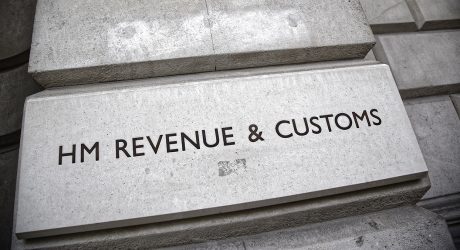Next week, the Upper Tribunal (Tax and Chancery Chamber) will hear an appeal by BlueCrest Capital Management (UK) LLP, a hedge fund manager and member of the BlueCrest Group, in relation to the application of the salaried members rules to its limited liability partnership (LLP) members. The appeal will determine the extent to which the services provided by the members to the LLP should be treated as disguised employment and taxed accordingly. This case will be of interest to other hedge funds and LLPs more generally.
Anastasia Nourescu and Cécile Perrault consider the background of the case and its impact on the interpretation of the salaried members rules.
The salaried members rules: a brief introduction
The salaried members rules were introduced by the Finance Act 2014 with effect from 6 April 2014. The rules aim to tackle disguised employment relationships by ensuring LLP members who provide services on terms more similar to employment are treated as employees rather than partners for tax purposes.
The salaried members rules for income tax are set out in sections 863A to 863G of the Income Tax (Trading and Other Income) Act 2005 (“ITTOIA 2005”). The rules apply if an individual satisfies all three of the following conditions:
- Condition A: it is reasonable to expect that at least 80% of the amount payable by the LLP to the individual member is disguised salary, ie it is fixed or it is variable but not by reference to the overall profits or losses of the LLP
- Condition B: the individual member does not have significant influence over the affairs of the LLP
- Condition C: the individual member’s capital contribution to the LLP is less than 25% of the amount of the disguised salary it is reasonable to expect the member to receive during the tax year in question.
Section 863G sets out a targeted anti-avoidance rule (“TAAR”), which states that any arrangements the main purpose, or one of the main purposes, of which is to secure that a member is treated as not being an employee, must be disregarded.
Similar provisions in relation to national insurance contributions (NICs) can be found in section 4 of the Social Security Contributions and Benefits Act 1992 and regulation 4 of the Social Security Contributions (LLP) Regulations 2014.
Background to the appeal
BlueCrest Capital Management (UK) LLP (“BlueCrest”) is a member of the BlueCrest Group (“the Group”), a financial asset manager with operations around the world. BlueCrest provides investment management services to the Group’s funds and back-office support to other companies in the Group.
Following an enquiry, HMRC decided that the salaried members rules applied to BlueCrest and assessed it for almost £200m in income tax and NICs for the tax years between 2014 and 2019. The assessments related to 80-100 individual members during the relevant tax years, including portfolio managers (individuals responsible for managing investment portfolios) and non-portfolio managers (including other front-office members and individuals responsible for providing back-office services to the Group). While it was common ground that Condition C applied, HMRC considered that the members also met Conditions A and B.
BlueCrest appealed to the First-tier Tribunal (Tax Chamber) (“FTT”) against HMRC’s assessments.
In its decision (BlueCrest Capital Management (UK) Limited v HMRC [2022] UKFT 204 (TC)), the FTT allowed BlueCrest’s appeal in part. The FTT held that the burden of proof was on BlueCrest to show that it did not satisfy the conditions in the salaried members rules and found as follows:
- Condition A: While it is not necessary for a member’s remuneration to “track” the LLP’s overall profits and losses, there must be some link between a member’s remuneration and those profits and losses. The FTT held that both the portfolio managers and non-portfolio managers met Condition A. This was because they had limited interest in the overall profitability of the partnership, and their discretionary allocations were “more akin to an employee’s performance bonus than to a partner in a traditional firm sharing in the overall profits of the partnership”, over which BlueCrest’s board had no real discretion.
- Condition B: Significant influence is a broad term that mirrors the role of a partner in a traditional partnership, which is to “find, mind and grind”, ie find work, supervise others to do the work, and do it themselves. It can include both managerial and financial influence. The FTT held that the portfolio managers with capital allocations of $100m or more and the desk heads had significant influence over the affairs of the LLP, as they directly and significantly influenced BlueCrest’s investment activities. Therefore, they did not meet Condition B, but the other portfolio managers and non-portfolio managers did.
- TAAR: Board resolutions were passed shortly before the salaried members rules came into force in 2014 to prevent the members’ discretionary allocations exceeding the LLP’s available profits. The FTT held that if it was wrong in its decision on Condition A, then the TAAR applied, and the resolutions should be disregarded as their main purpose or one of their main purposes was to ensure that the members were not treated as employees.
Overall, BlueCrest succeeded in its appeal only in respect of the portfolio managers with capital allocations of $100m or more and the desk heads. The FTT held that the salaried members rules applied to the other members, ie portfolio managers with capital allocations under $100m and non-portfolio managers, who should be treated as employees for income tax and NICs purposes.
The Upper Tribunal will consider an appeal against the FTT’s decision in a three-day hearing starting on 27 June 2023.
Who should follow this case?
As this is the first case to consider the application of the salaried members rules, it is not surprising the Upper Tribunal is hearing it, and it may well be appealed to the higher courts. HMRC has increased its focus on compliance with salaried members rules in recent years and has continued to ramp up its efforts in light of the FTT decision.
The Upper Tribunal’s decision will be of interest to all LLPs and especially hedge funds, many of which will have the same set up as BlueCrest. Many LLPs have put in place rules and documentation to comply with the salaried members rules, similar to the board resolutions adopted by BlueCrest in 2014. However, HMRC and the tribunal will look behind the documentation to see what happens in practice, for example, how profits are allocated to members and the influence members have over the affairs of the LLP. Any changes to the operation of an LLP must therefore be genuine and reflected in the day-to-day operation of the firm, not least as they will otherwise be caught by the TAAR.
You can find further information regarding our expertise, experience and team on our Tax Litigation and Resolution page. If you require assistance from our team, please contact us.
Subscribe – In order to receive our news straight to your inbox, subscribe here. Our newsletters are sent no more than once a month.







